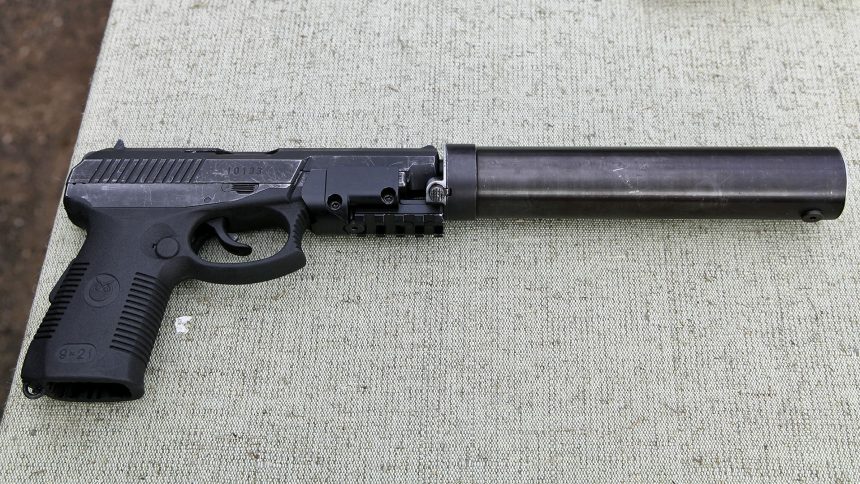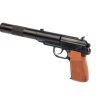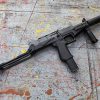The SR-1 Vektor, also known as the Gyurza or SPS, is a 9x21mm semi-automatic pistol designed for the Russian military. Developed in the mid-1990s by Petr Serdyukov, this weapon was intended to replace the Makarov PM. The firearm is currently being produced as the SR1M.
Introduction
The SR-1 Vektor was created in conjunction with the 9×21 mm round. Initially intended for use by the Russian military, it ultimately lost favor to designs utilizing standard ammunition in the mid-1990s. However, it was later adopted as the primary sidearm of the Russian Army under the name Yarygin pistol. Additionally, it was chosen by Russian law enforcement agencies as the SR-1 Vektor. In 2003, an improved version of the pistol, now known as the SPS, was adopted for military and police use.

It is noteworthy that the SR-1 Vektor is prohibited in the United States due to its powerful firepower.
Design
The SR-1 Vektor is a formidable weapon designed for close-combat situations. It utilizes a newly-developed 9x21mm ammunition, specifically the SP-10, a primary armor-piercing round with a steel core bullet created to penetrate body armor. The SR-1 Vektor can penetrate 30 layers of Kevlar and up to 2.8mm of titanium at a distance of 100 meters and a 4mm steel plate at 50 meters.
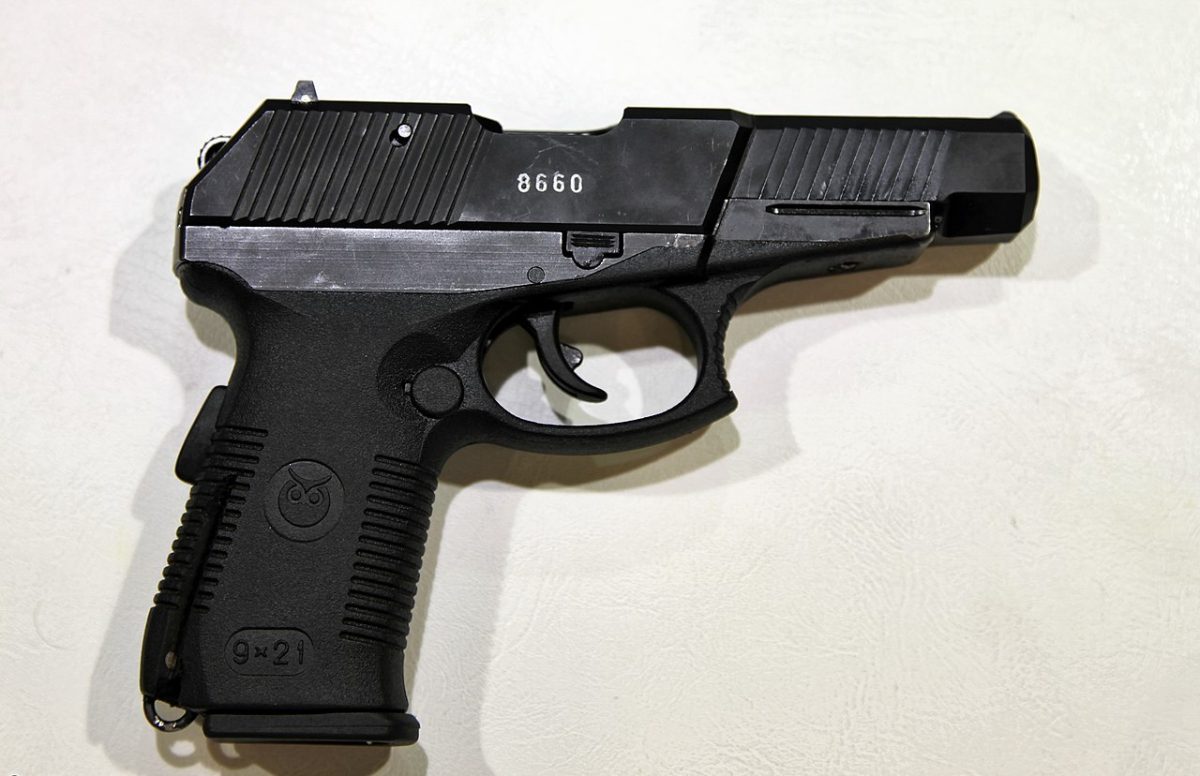
Other rounds in this ammunition line include the SP-11 standard ball round, the SP-12 round with low-ricochet and expanding bullet, and the SP-13 armor-piercing tracer round. The drawback of this new ammunition is its cost, which is significantly higher than traditional 9x19mm ammunition. It is also used in the SR-2 Verserk submachine gun.
This gun has enough firepower to pierce 30 layers of kevlar, which made it the weapon-of-choice for the Russian president’s personal guards.
President’s bodyguard
The SR-1 Vektor operating system is modeled after the Beretta 92, featuring a dropping block design. Its frame is constructed of both polymer and steel. Unlike traditional firearms, it does not have manual safety. Still, it has a grip safety that disengages the trigger mechanism and a trigger safety that prevents firing when the trigger is not depressed. Additionally, the hammer must be placed in the half-cock position to engage the sear and enable double-action firing.
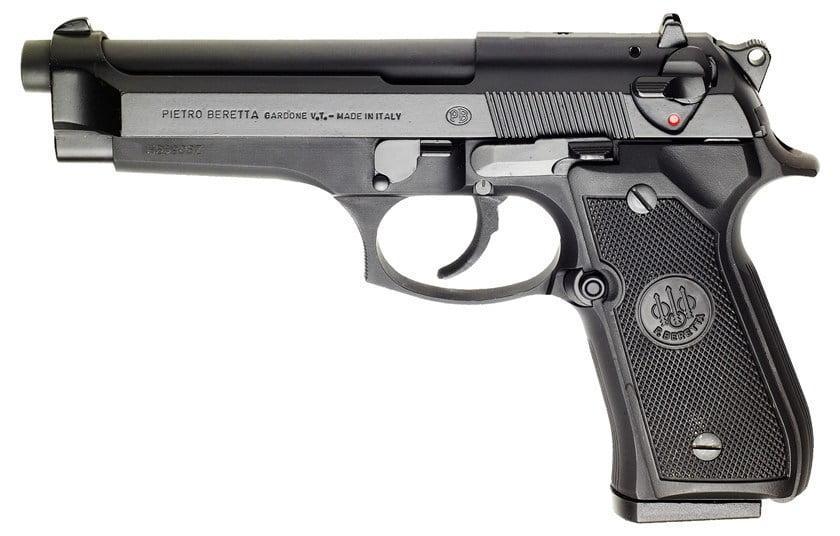
The SR-1 Vektor is fed from a double-stack magazine that holds 18 rounds. The pistol features simple iron sights and has a range of effective fire up to 100 meters. It also has a Picatinny-type rail that can be fitted for accessories such as a tactical flashlight and laser pointer. Additionally, it can also be equipped with a sound suppressor.
9×21mm Gyurza round
The Gyurza (named after a venomous snake) is a Russian handgun cartridge developed by TsNIITochMash. Specifically designed to penetrate body armor, it is used in the SR-1 Vektor semi-automatic pistol and SR-2 Veresk submachine gun.
Performance
The design of the rounds allows for effectiveness against both unarmored and armored targets. The bullet features a hard sub-caliber core encased in an outer sleeve, separated by a polyethylene layer. Upon impact with an unarmored target, the bullet remains intact, creating a wide wound channel. Against armored targets, the outer sleeve is stripped away, allowing the core to penetrate.

The 7N29 AP loading utilizes a 6.7g bullet, reaching speeds of 410m/s with 560J of muzzle energy. It can penetrate two 1.2mm titanium plates, along with 30 layers of Kevlar, at a distance of 50m. However, the rounds require high-impact velocities to function effectively. Thus, the bullets are relatively light to maximize their muzzle velocity, resulting in a limited effective range due to rapidly losing velocity.
Variants
- SP-10 (7N29) – armor-piercing bullet with hardened steel core
- SP-11 (7N28) – standard FMJ bullet with lead core
- SP-12 – low ricocheting, expanding bullet
- SP-13 (7BT3) – tracer AP bullet based on 7N29
Technical specifications
| Country of origin: | Russia |
| Manufacturer: | TsNIITochMash |
| Caliber: | 9 x 21 mm |
| Weight (empty): | 1,000 g |
| Weight (loaded): | 1,180 g |
| Length: | 195 mm |
| Barrel length: | 120 mm |
| Muzzle velocity: | 420 m/s |
| Magazine capacity: | 18 rounds |
| Sighting range: | 100 m |
| Range of effective fire: | up to 100 m |



